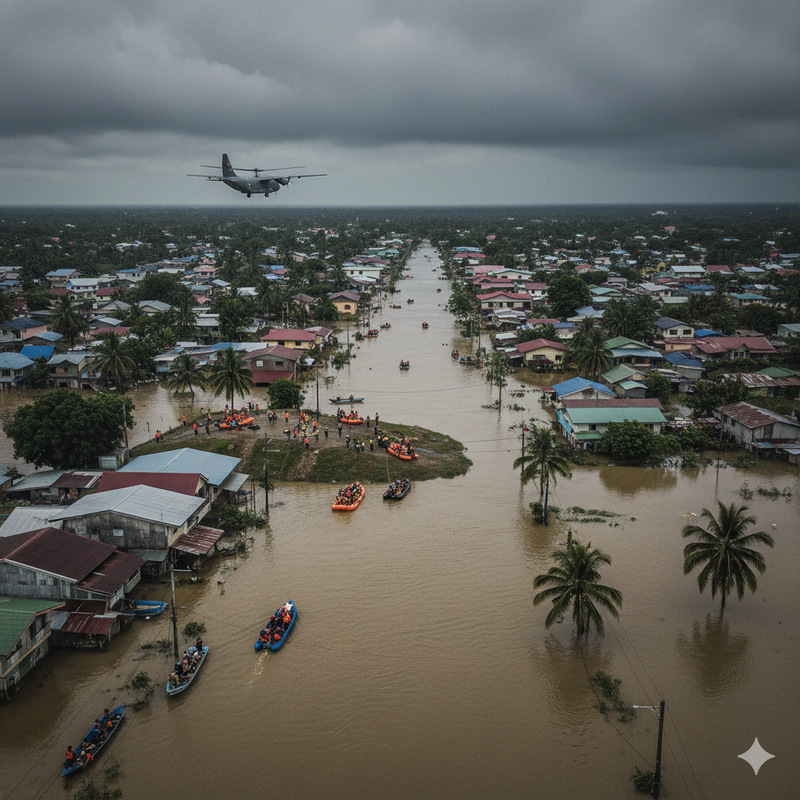
Lifestyle
Philippines Begins Cleanup After Typhoon Kalmaegi Leaves at Least 85 Dead: Recovery Efforts and Climate Resilience in Focus
The Philippines has launched extensive cleanup and recovery operations following the devastating impact of Typhoon Kalmaegi, which has claimed at least 85 lives and left widespread destruction across multiple regions. The powerful storm, which made landfall with sustained winds and torrential rainfall, has once again highlighted the Southeast Asian nation's vulnerability to extreme weather events and the urgent need for enhanced disaster preparedness infrastructure.Immediate Aftermath and Humanitarian ResponseIn the wake of Typhoon Kalmaegi's destruction, Filipino communities are grappling with catastrophic damage to homes, infrastructure, and agricultural lands. Local government units, supported by national agencies and international humanitarian organizations, have mobilized rescue teams and emergency response personnel to assist affected populations. The Philippine National Disaster Risk Reduction and Management Council has coordinated relief operations, distributing essential supplies including food packages, clean water, medical supplies, and temporary shelter materials to thousands of displaced families.Emergency responders continue search and rescue operations in severely affected areas, where flooding and landslides have made access challenging. The death toll, currently standing at 85, may rise as teams reach isolated communities cut off by damaged roads and infrastructure. Medical teams have established field hospitals to treat injured survivors, with many suffering from injuries related to collapsed structures, flood-related incidents, and exposure to harsh weather conditions.Infrastructure Damage and Economic ImpactThe typhoon has inflicted substantial damage on critical infrastructure across affected regions. Power lines have been downed, leaving hundreds of thousands without electricity. Water supply systems have been compromised, raising concerns about waterborne diseases. Roads and bridges have suffered severe damage, hampering relief efforts and disrupting supply chains. Agricultural losses are expected to be significant, with rice paddies flooded and crops destroyed just before harvest season, threatening food security and farmer livelihoods.Economic experts estimate that reconstruction costs could reach billions of pesos, placing additional strain on government resources already stretched by previous natural disasters. The tourism industry, a vital economic pillar for the Philippines, faces temporary setbacks in affected coastal areas where resorts and tourist facilities sustained damage. Small businesses, particularly in rural communities, have been devastated, with many losing their primary sources of income.Climate Change and Increasing Storm IntensityTyphoon Kalmaegi arrives amid growing scientific consensus that climate change is intensifying tropical cyclones in the Western Pacific region. The Philippines, situated along the typhoon belt, experiences an average of 20 tropical cyclones annually, making it one of the world's most disaster-prone nations. Meteorological data indicates that storms are becoming more intense, with higher wind speeds and increased rainfall capacity, attributed to warming ocean temperatures.Climate scientists emphasize that rising sea levels compound the destructive impact of typhoons, increasing coastal vulnerability to storm surges. The Philippines government has recognized climate adaptation as a national priority, investing in early warning systems, climate-resilient infrastructure, and community-based disaster preparedness programs. However, the frequency and intensity of recent storms underscore the challenges facing developing nations in building resilience against climate-related disasters.Government Response and Long-Term Recovery PlansPresident Ferdinand Marcos Jr. has pledged comprehensive support for affected communities, promising expedited release of calamity funds and mobilization of all available government resources for recovery efforts. The Department of Social Welfare and Development has activated its disaster response protocols, coordinating with local government units to ensure efficient distribution of relief assistance. The military and police forces have been deployed for security, logistics support, and infrastructure rehabilitation.Long-term recovery plans include rebuilding homes to higher construction standards, upgrading drainage systems to prevent flooding, and relocating communities from high-risk areas. The government is also implementing "Build Back Better" principles, ensuring that reconstructed infrastructure incorporates disaster-resilient features. International development partners, including the United Nations, Asian Development Bank, and various bilateral donors, have expressed readiness to support Philippines' recovery and resilience-building efforts.Community Resilience and Preparedness LessonsDespite the devastating impact, stories of community resilience have emerged, demonstrating the Filipino spirit of "bayanihan" – communal unity and cooperation. Local communities demonstrated remarkable preparedness, with many residents heeding early warnings and evacuating to designated shelters before the typhoon's landfall. This response reflects improvements in disaster risk education and early warning communication systems implemented after previous catastrophic storms.Moving forward, disaster risk reduction experts emphasize the importance of sustained investment in preparedness measures, including regular evacuation drills, strengthening of early warning systems, and community-level disaster response training. Educational campaigns promoting climate awareness and sustainable environmental practices are essential for building long-term resilience against increasingly frequent extreme weather events.International Support and SolidarityThe international community has extended solidarity with the Philippines, with neighboring countries and international organizations offering assistance. Humanitarian aid packages, including emergency supplies and financial support, are being mobilized to supplement national response efforts. This global cooperation underscores the shared responsibility in addressing climate-related disasters and supporting vulnerable nations on the frontlines of climate change impacts.As the Philippines continues its cleanup and recovery operations, the nation faces the dual challenge of addressing immediate humanitarian needs while building long-term resilience against future disasters. Typhoon Kalmaegi serves as another stark reminder of the urgent need for comprehensive climate action, both at national and international levels, to protect vulnerable communities from increasingly devastating natural disasters.
Comments (0)
Please log in to comment
No comments yet. Be the first!